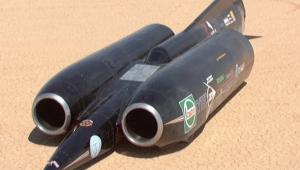Car Wars

Pop quiz! Quick! Which industry is evolving faster? Automobiles or computers?
If you answered the latter, you are CORRECT! You, sir or madam, have a keen eye for the obvious. Congratulations!
The hoary comparison goes something like this: if cars evolved as fast as computers, your car would get 300 mpg, cost $1000, and you could conveniently fly it from New York to Paris for dinner. Clearly, cars do none of those things. Caught somewhere between the innovations of Henry Ford and Steve Jobs are the electronics in your car’s dashboard. The AM/FM/CD receiver there is a little more evolved than your internal-combustion engine, but not by much. In fact, nothing dates a car as quickly as its dashboard entertainment.
Car makers struggle to develop proprietary in-vehicle-infotainment (IVI) technology while not obviously revealing how behind the times they are thanks in part to the long lead times of vehicle development. The painful fact is that even in a new car, the phone you toss onto the center console blows away anything the car maker built into the dashboard. Everyone knows the current situation isn’t tenable; something needs to change.
Car makers are hedging their bets, and as a result, their product offerings are all over the map. All of them have developed proprietary IVI; the systems are handsomely profitable and they also help distinguish one model and brand from another, but they embarrassingly lag phone and tablet development. A possible fix may come in the form of GENIVI, an open-source car-electronics platform that would let car makers innovate more quickly at lower cost. Another possibility is Tizen, a project within Linux that would integrate devices with IVI.
Car makers are also wisely partnering with the computer software giants Microsoft, Apple, and Google. Microsoft powers Ford’s MyFord Touch system; to accommodate more apps, Ford will begin increasing screen size in the Fiesta from 4 to 6.5 inches and streamline the voice commands. Chevrolet has just announced that the MyLink on the Spark and Sonic will be fully integrated with Apple’s Siri on iPhone 4S and 5 – complete with a Siri steering-wheel button. “Siri, I’m driving the wrong way down a one-way street at 120 mph and I’m really buzzed, can you tell me what temperature I should serve gazpacho?”
The other option is to drop an Android-based, smartphone-like device into the dashboard. Google is reportedly chomping at the bit to extend its Android invasion into the car ecosystem. Unlike Apple, it does have good maps….. With still another approach, Sprint is showing its Velocity system in some Chrysler UConnect Access vehicles; Chrysler has selected Sprint to run its vehicle wireless connectivity. Today, 4% of U.S. vehicles are connected to the internet; within 10 years, the number could jump to 90%. Another reason why car makers want to get this sorted out asap.
Parenthetically, the National Transportation Safely Board wants to mandate collision-avoidance systems in future cars. With the driver distractions that are accompanying increasingly smart dashboards, that might not be a bad idea.
One thing is for sure: the days of a dumb 6-disc CD changer and a USB port are long gone. Your dashboard will be powered by a sophisticated operating system, be completely conversant with your phone, and will provide terrific connectivity. The part about flying to Paris is still a few years off.
- Log in or register to post comments






























































